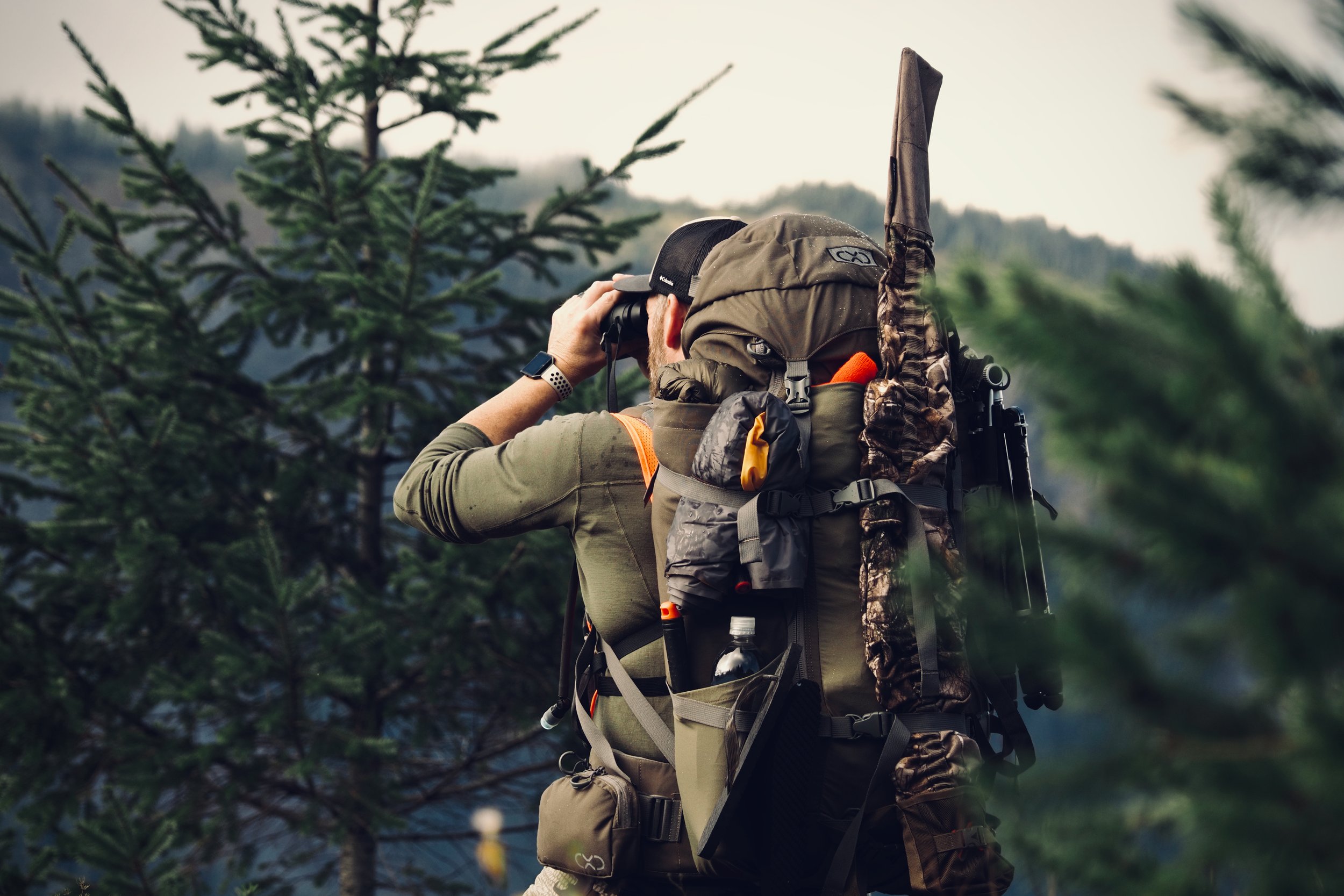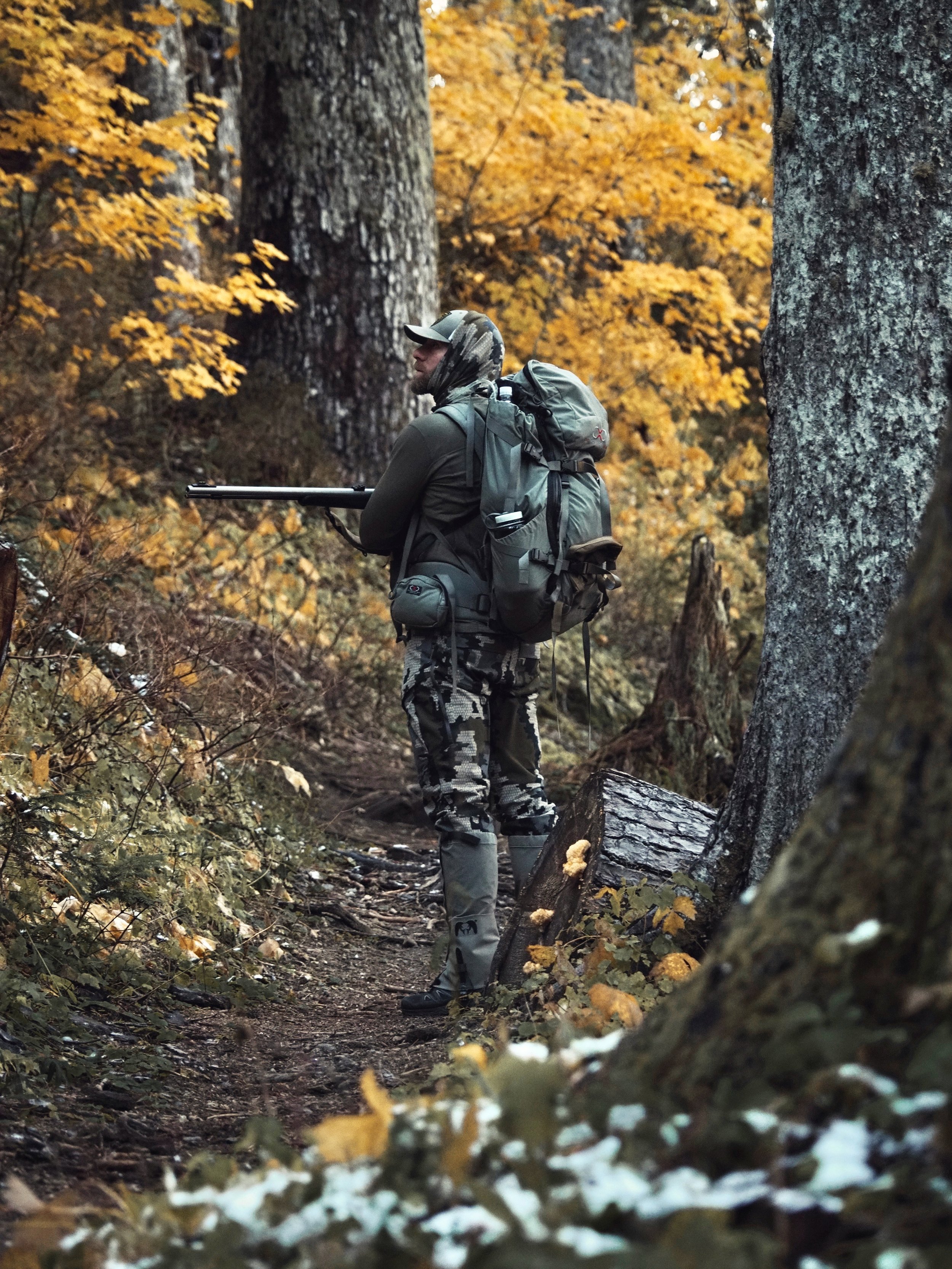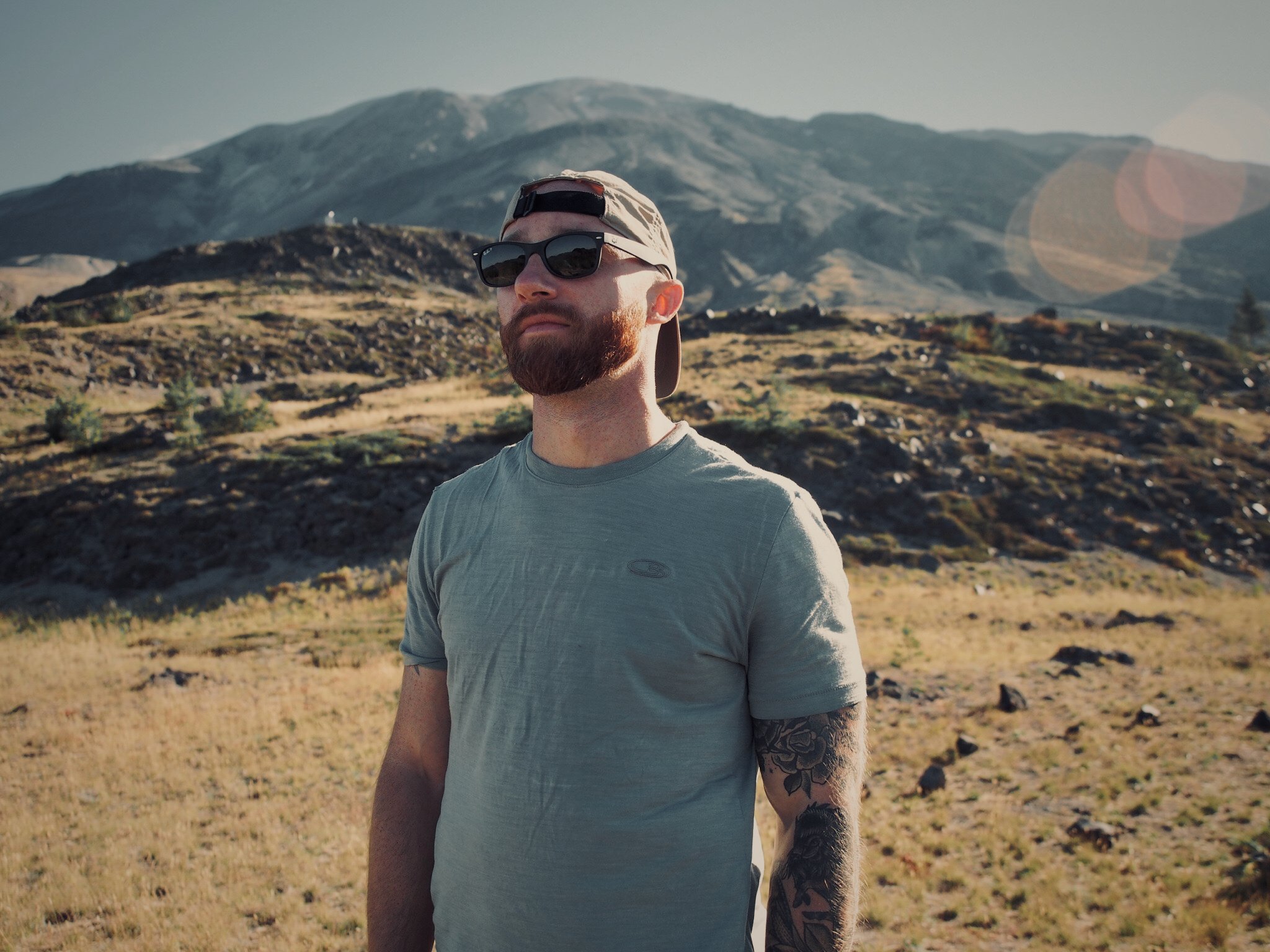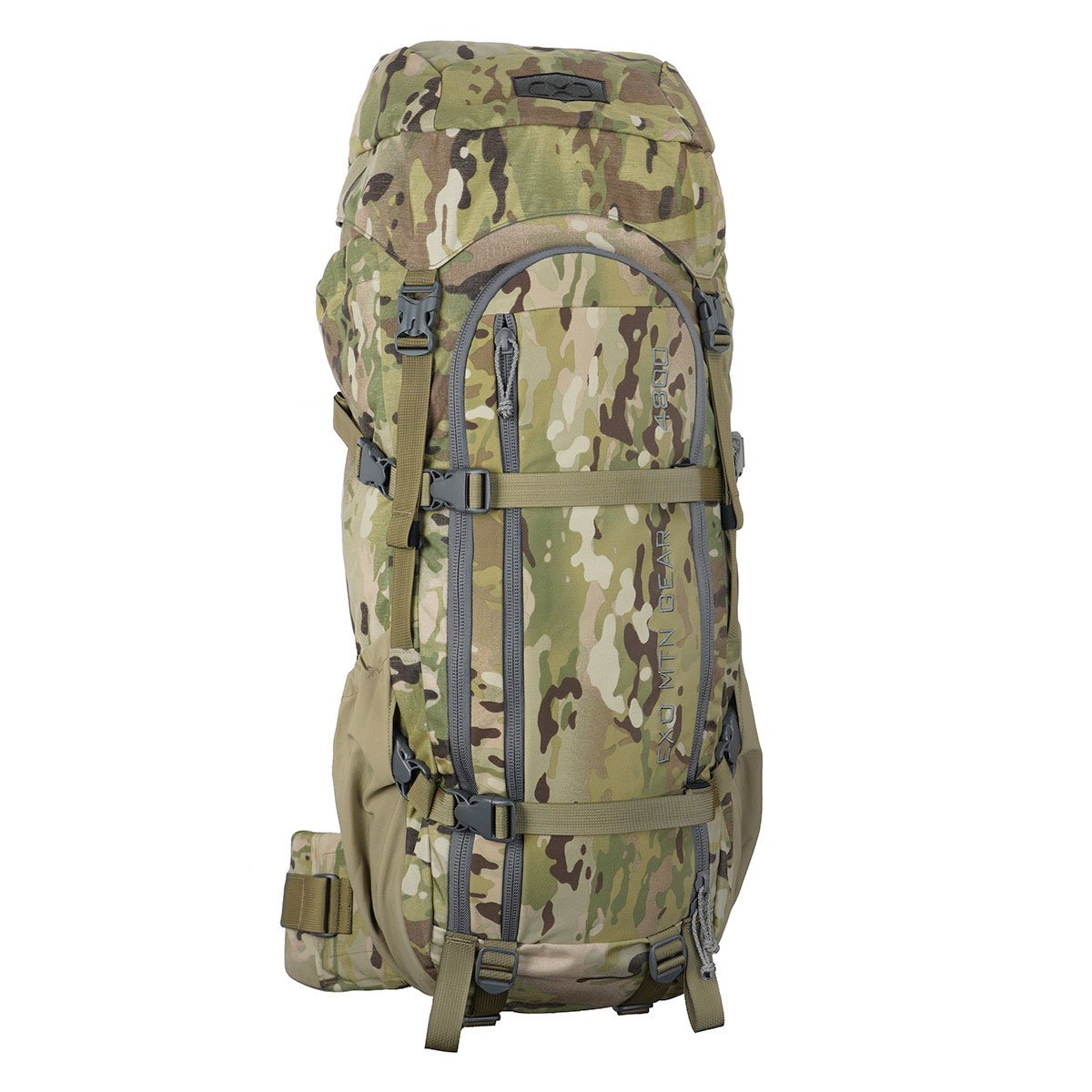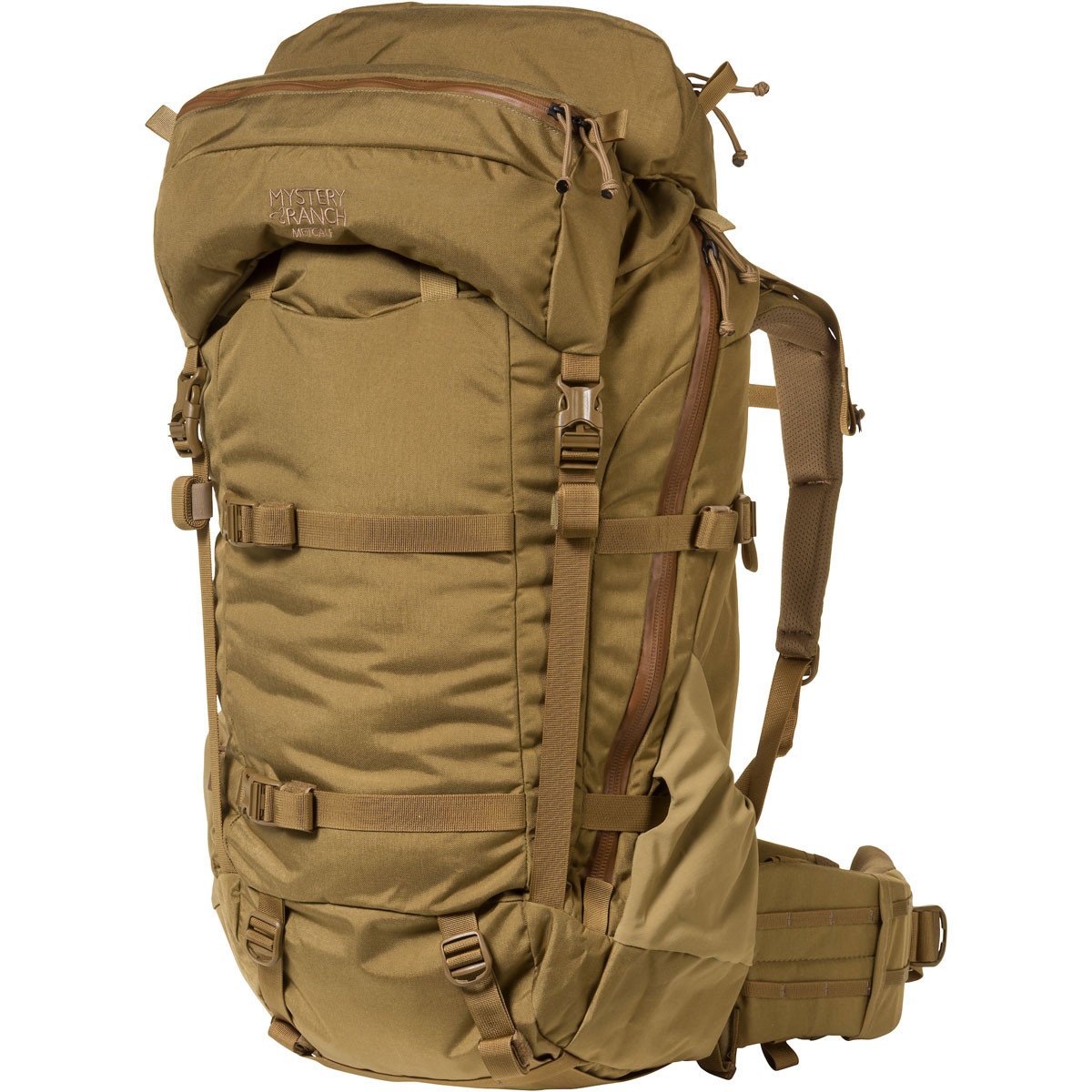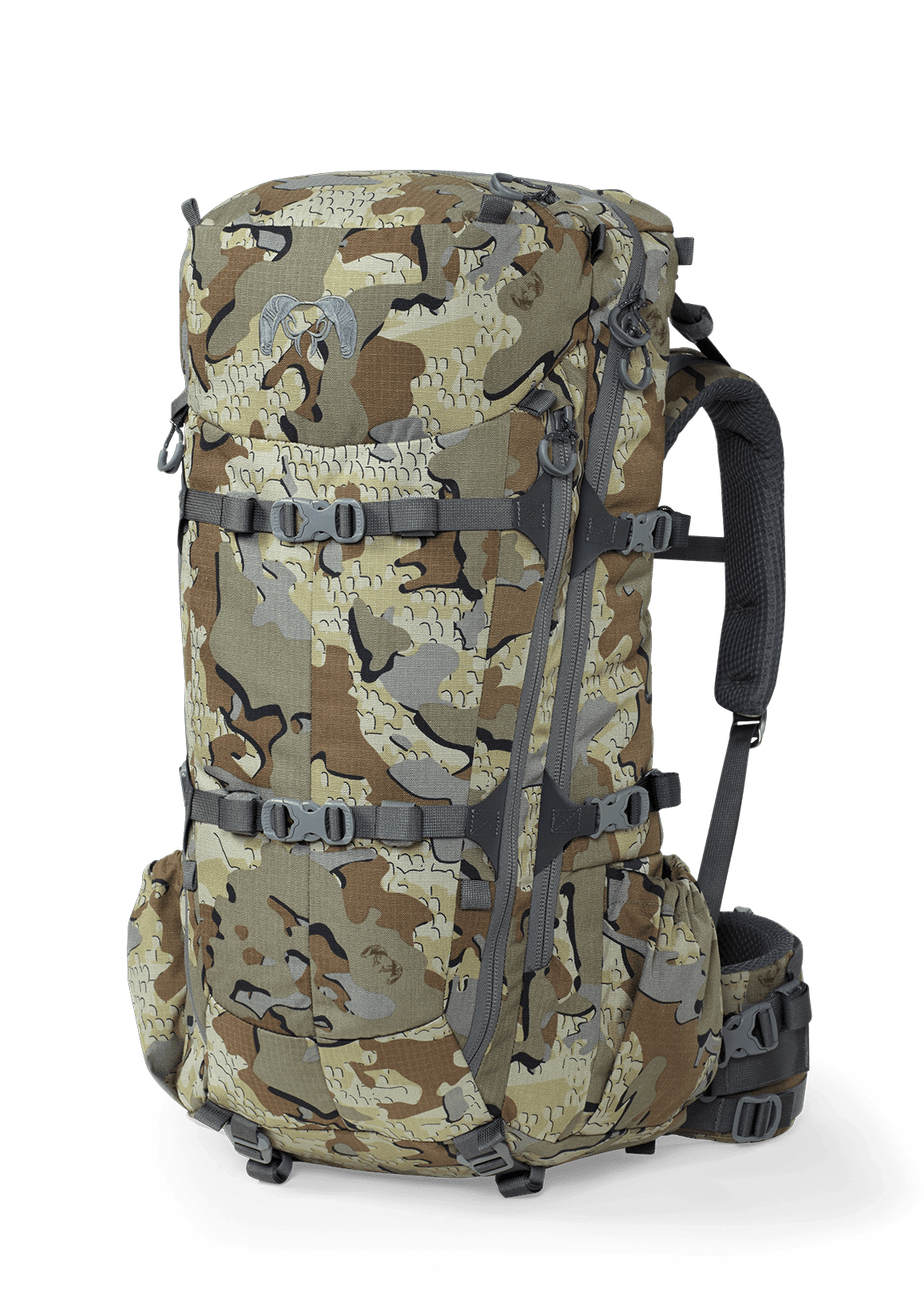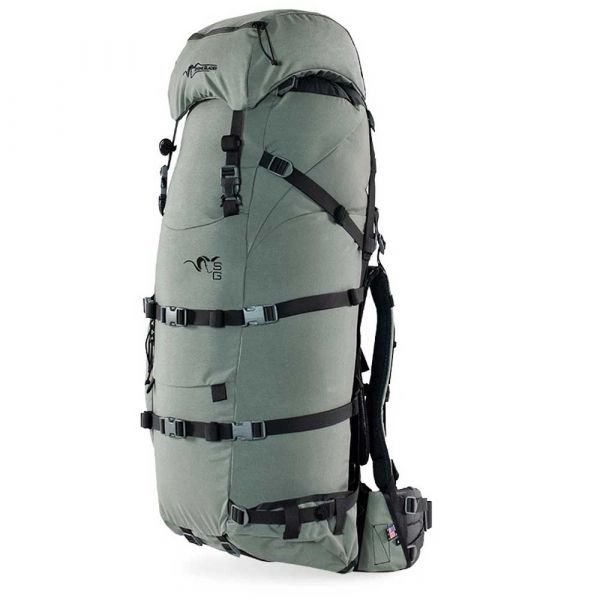How To Choose The Right Pack Size For Your Backpack Hunt
Choosing the right pack size for your backpack hunt has a direct impact on your overall comfort, capability, and functionality in the backcountry. Choose a pack that’s too small and you’ll be struggling to find space for what you need for your hunt and forced to strap delicate items to the outside where they’ll risk damage. Choose too large of a pack and you’ll end up overpacking, taking more than you need, and ultimately weighing yourself down without gaining much for it.
The goal of every backpacking trip is to bring what you need to get the job done and to do it safely without bringing extra or non-essential items. No two backpack hunts are the same so no two packs are the same, so let’s get it all sorted out so you can make the right choice.
The Importance of Pack Size
Aside from its load-hauling ability, a backpack is made to contain and protect the gear you bring with you into the mountains. Your backpacking and hunting gear belongs INSIDE your pack bag rather than dangling on the outside where it’s subject to the elements, sticks, rocks, scree, and whatever else the mountain can throw at you.
A pack that’s too small may result in having to strap items to the outside you normally wouldn’t want to.
Your chosen pack size also plays a role in how comfortable you are on the trail and in camp. You want to choose a pack size that suits your needs and gives you ample room to bring what you need while not giving you extra space for items you think you need but won’t actually use.
Large pack sizes might sound attractive at first because they have that extra space, but all they do is weigh you down both physically and mentally. If you have the room, you’ll use the room because no one likes the look of a half-empty backpack. Our caveman brains can’t make sense of it so we have to fill it up. Once it’s topped off, the physical size of the pack is enough to weigh you down before you even strap it on.
Remember, as a backpack hunter you’re actually trying your best to come out heavier than when you went in so give yourself a fighting chance from the start. Take only what you need and rest easy knowing your gear is nice and secure in your pack because you planned accordingly.
What To Consider When Choosing Your Pack Size For Your Backpack Hunt
There’s really only one thing you need to consider when determining pack size - MISSION. Your mission determines your gear list and your gear list determines the size pack you’ll require. If your mission is a self-supported 14-day hunt in the Yukon in October, then you’ll want that expeditionary-sized pack (6000+ cubic inches). If, however, your mission is a 1-3 night elk hunt in September during nice weather, you can kiss that expeditionary pack goodbye and replace it with a 3000-4500 cubic inch pack. For those heading in for an overnight hunt, you can easily get by with 2000 cubic inches depending on how you pack and what you’re packing.
CAVEAT:
There is one caveat to the above statement about mission determining pack size, and that’s your actual gear. If you’ve spent the money to buy high-end backpacking gear, then packing it into a smaller bag size will be much easier for you. For those who are backpack hunting on a budget, it’s likely your gear simply won’t pack down as small because of the materials being used.
An example of this would be a sleeping bag. Higher-end bags come with higher quality down (800 fill power +) whereas lower-end bags will come with a fill power of around 600, give or take. That 800 + fill power means less down is required to achieve a certain warmth rating which results in a lighter, more compact bag. A bag toting around 600 fill power down will not only have more trouble packing down due to the requirement to have more down feathers in it, but it will also weigh more. Two sleeping bags rated to 30 degrees at opposite ends of the quality spectrum will pack MUCH differently so it’s important to account for it.
The same goes for each and every other piece of gear in your bag. Some gear is just built larger so it takes up more space and there’s nothing wrong with that. We all have our personal budgets so play with the hand you’re dealt. Buy that bag that fits your gear and meets your mission set.
So Many Sizes, What Are They All For?
Multi-day packs are great for both overnight hunts and day hunts. Large but not too large.
Every backpack design, shape, and size has a specific purpose. When it comes to hunting, these packs are purpose-built for very specific activities which is why you see sizes ranging from 1800 cubic inches (ci) all the way to 8000 cubic inches. To make it easy to know what is what, let’s break these down into three categories; Day Packs, Multi-Day Packs, and Expedition Packs.
*The following are estimates based on data from a variety of brands. Please use these volume numbers as a general guide.
Day Packs (1200ci - 3000ci)
Day Packs are purpose-built for day trips into the backcountry, but they’re included here because some hunters often use their day packs as an ultralight overnight system. If you have a spot a few miles in and want to be there for first light, but don’t want to wake up at 1 am for the hike in, you can toss a compact bivvy kit in your day pack with minimal gear to get the job done overnight and use your daypack as your “overnight” pack.
Most Day Packs for hunters range from 1200 ci all the way up to 3000 ci. Packs on the higher end of that range are certainly in the “multi-day range” and are capable of handling more gear whereas packs on the lower end of the range are focused more on day trips.
Multi-Day Packs (3000ci - 5000ci)
Multi-Day Packs are the sweet spot of most backpack hunters headed out for 1-7 days in the backcountry. On the low end between 3000 ci and 4500 ci, you can expect to get roughly 1-4 days’ worth of gear and food (on average) into your pack. For hunts extending out to 7 days without resupply, packs ranging from 4500 ci to 5000 ci afford the hunter additional space for the extra food required to reach that 7th day along with any extra gear needed to make that time in the field a bit more comfortable.
Pro Tip:
If you’re planning a 10-day backpack hunt and you’re concerned you’ll need something larger than a Multi-Day Pack, consider breaking your trip up into 5-day chunks and planning a self-resupply at the truck midway through your hunt. This would allow you to keep your overall pack weight down while also giving yourself a break to cook some food at the truck, crack a cold beverage, and recharge for the next 5-day stint. This is more than achievable when, on average, most hunts occur within 5 miles of the nearest trailhead. You can hunt to and from your resupply to optimize your time in the field while also benefiting from the before mentioned points.
Expedition Packs (5000ci + )
Expedition Packs are purpose-built for those longer 10-14 day hunts where resupply is not an option. For those striking out for these longer trips, you’ll want the extra space in your pack for extra comfort items and food that will last the duration. As your trip extends into 10 days and beyond, weather reports become unreliable so it’s best to go in prepared for what could come your way, which is why these packs are so large. With all pack sizes, gear lists generally remain the same, but it’s the amount of food and extra kit such as a wood-burning stove that takes up the most space.
Unless you know for sure you’re headed into the field unsupported for 10 days or more, you’ll want to pass on these larger packs due to their robust oversizing. Luckily, most pack systems today have the ability to swap out bag sizes so in the event you end up needing that expeditionary size bag, you can purchase it at a later date. As mentioned previously, large packs may sound like a good idea at first because you think you need the room, but they tend to be filled with non-essential gear if they’re used for anything but expeditionary purposes.
The Most Common Pack Sizes for Backpack Hunters
On average, most backpack hunts last between 1-7 days. A pack that lands in that multi-day range sized between 3000 ci and 5000 ci is a great choice for the vast majority of hunters. If your gear is dialed in and you’re efficient with your packing, you can easily get 5 days out of a 3500 ci pack, but if you need that extra space to account for the bulkier gear required in later seasons, then the higher-end of that range around 4800 ci should be sufficient.
Pack sizes in the Multi-Day category also make for a functional Day Pack size, especially on the lower end. They’re big enough to accommodate gear for the day, but not too big that they’ll be sloppy and difficult to compress down. If you require a smaller pack or larger pack for specific hunts throughout the season, most brands on the market offer multiple sizes that the user can easily swap out within minutes. The frame and harness remain the same, but the bag can be changed out as needed.
How To Choose A Pack Size That’s Right For You
If you’ve been a long-time backpacker or even on a few backpack hunts so far, it’s likely you know how much space is required for your gear and you can purchase your bag accordingly. However, if you’re new to this backpack hunting thing and you’re in the midst of collecting gear, then it’s going to be difficult to know what size you’ll need within the above size ranges. Use the 3 tips below to help inform your decision on which pack size is needed for your hunt.
Buy Your Bag Last
Hold off on purchasing your pack until you have the majority of your gear purchased so you can see where you’re at in terms of needed pack volume. This can prevent you from buying the wrong-sized pack in either direction or having to re-purchase gear that fits into your pack.
Be Realistic
We all like the idea of potential adventures, but try not to purchase your pack based on those edge-case hunts. Be honest about what you’ll actually be doing on average, and buy the bag that fits that mission. If you’re really only doing overnight hunts, then get a small bag and enjoy the weight savings.
Don’t Overthink It
It’s just a bag. If it doesn’t work, you can sell it to get the one you need. There’s always someone needing a used bag, so don’t worry if what you buy doesn’t work out. You’ll always be swapping gear out for better stuff, so follow your gut, pull the trigger, and load that thing up!
Final Words of Advice For Backpack Hunters
Regardless of what size pack you decide to go with, the only thing that matters is that you’re out there getting after it, learning, and enjoying yourself. Use this article as a starting point and adapt it as necessary. Remember, no two trips are the same and no two hunters are the same so there’s no real “right or wrong” way to backpack hunt. Do what you feel comfortable with, buy your gear accordingly, and learn from it. Always look to improve your kit, increase efficiency, and optimize for the mission.
Emory, By Land
Thanks for stopping by the website and checking out this article! If you have any questions for me, you can leave a comment below or shoot me a personal message at emory@byland.co.
Suggested Packs for Backpack Hunting
If you’re looking for a place to begin, here are some packs that are well regarded within the backpack hunting community.


